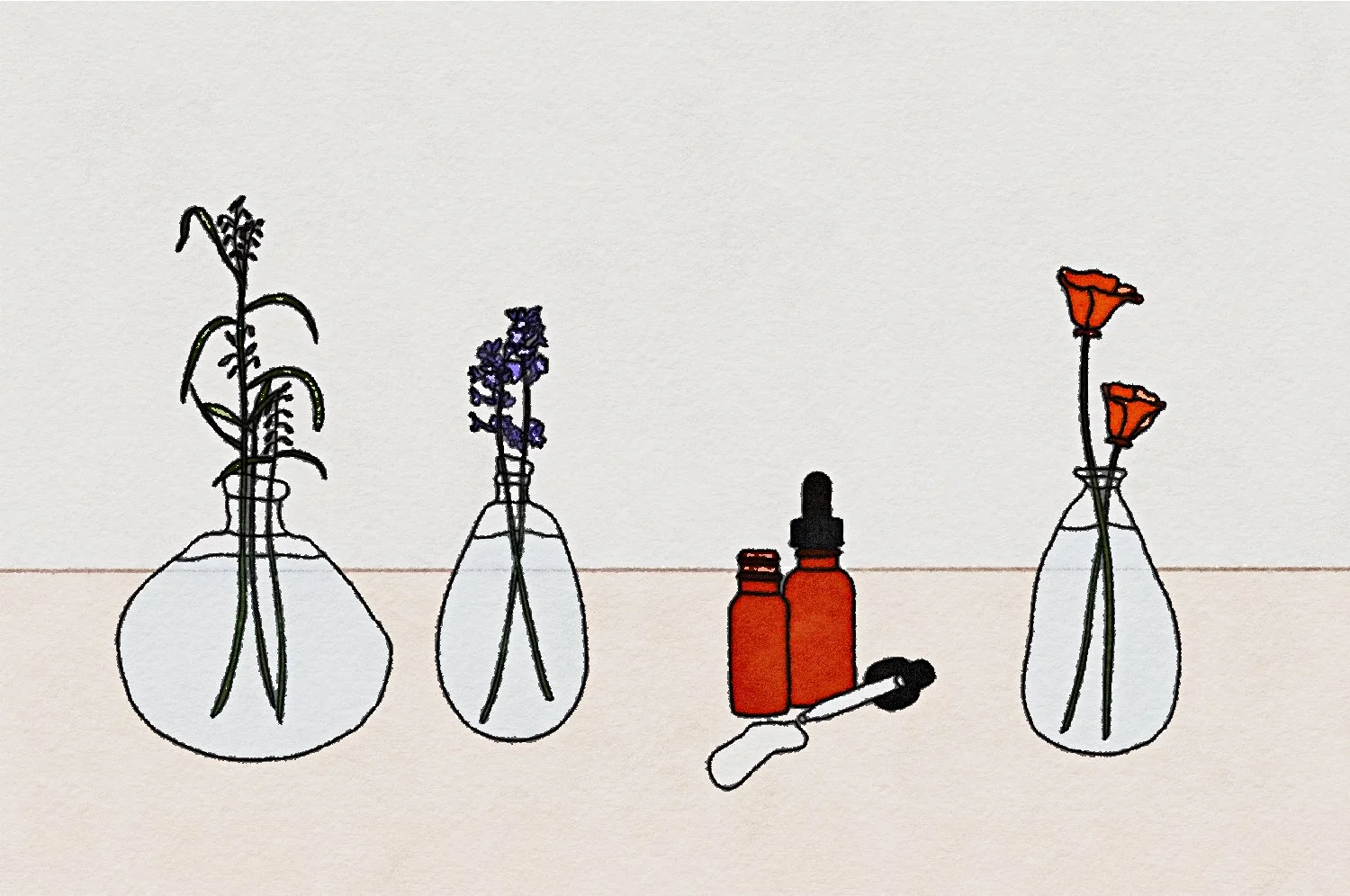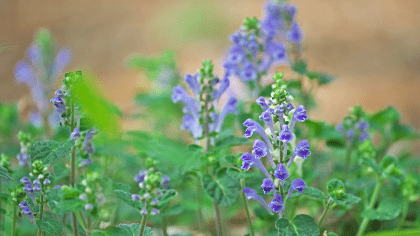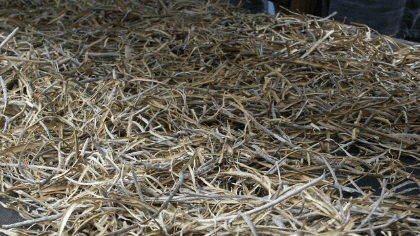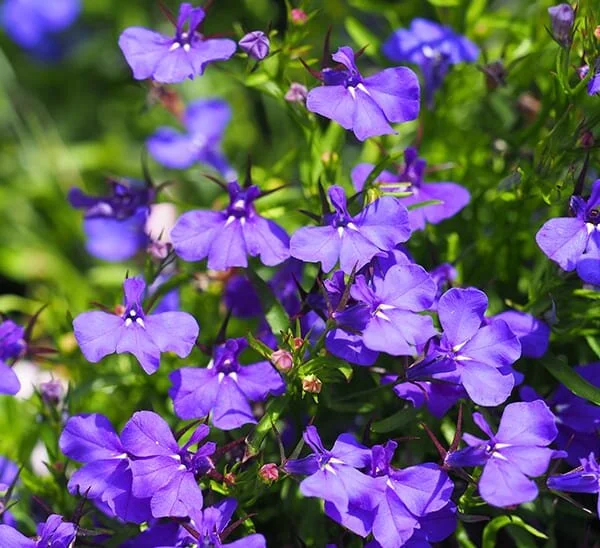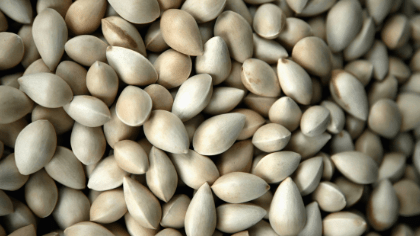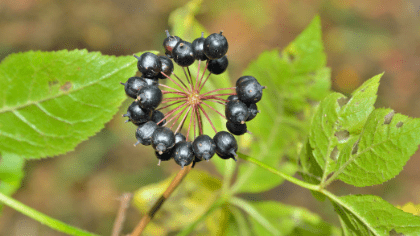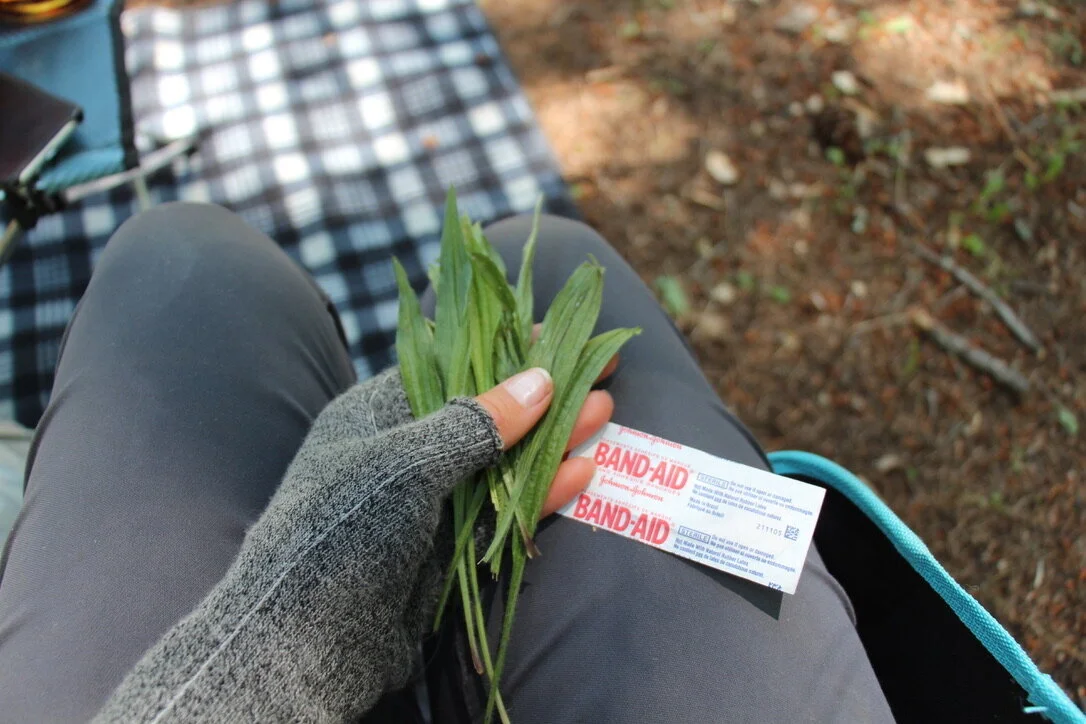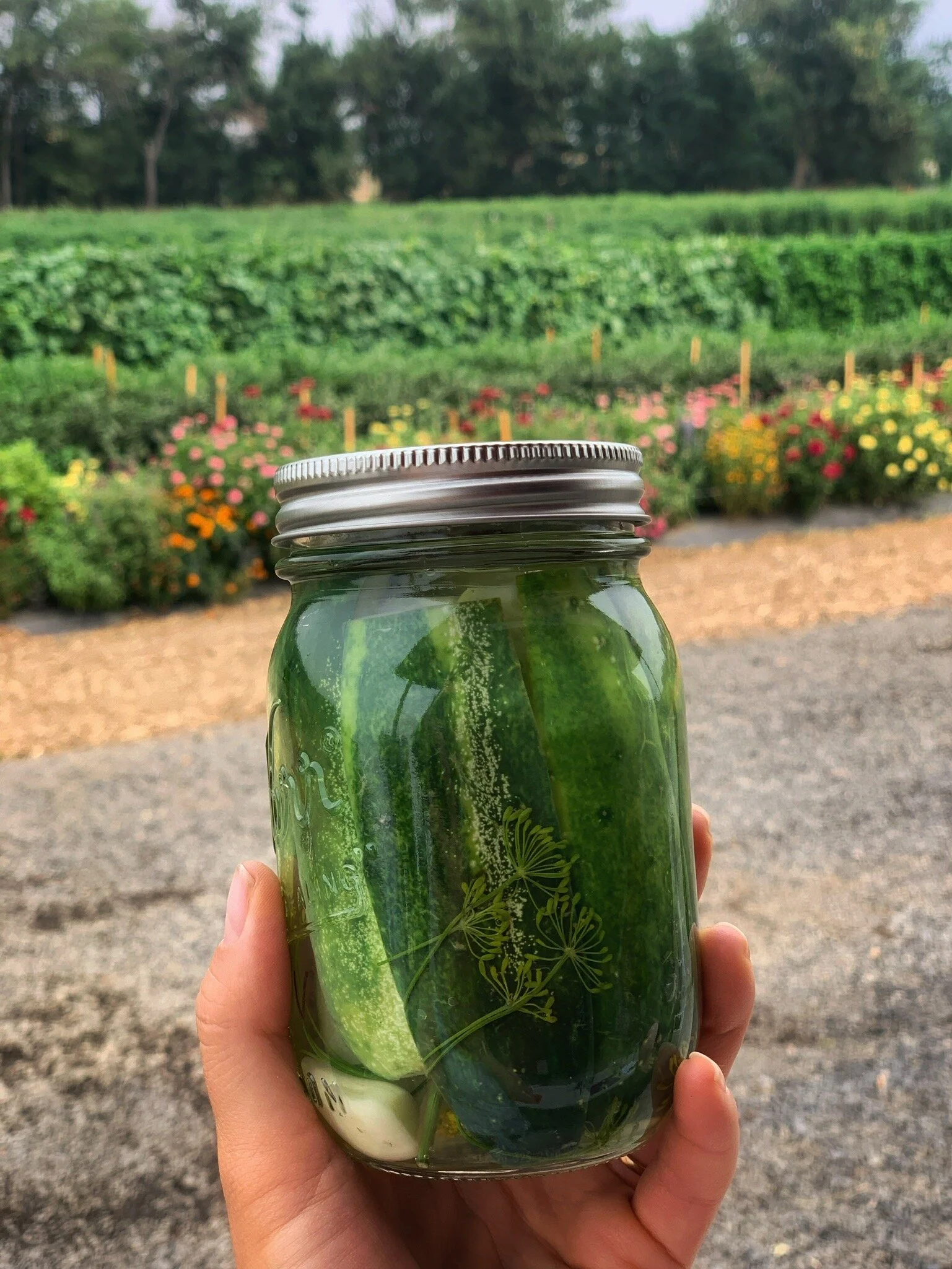Nervines: Herbs for the Brain
There are different ways herbs are great for the brain and nerves. Not only are they full of nutrients (making them food AND medicine), but also form a direct link with your nerves.
Our nerves need some help. In the United States alone over half a billion dollars is spent every year on medication for JUST headaches.
Here is a list of some imbalances that indicate your nervous system needs special care:
restlessness, irritability, depression, herpes, period pain and PMS, skin issues, insomnia, inability to cope, headaches, low energy, mental fatigue.
Herbs can help in major ways. Way more than just the green stuff on your plate, herbs have an ability to speak to your cells in the form of “instructions” towards healing and optimal functioning (the way your body SHOULD be working).
Plants are abundant with chemicals, many of which do not seem to do anything for the plant itself. These chemicals have been proven, however, to have a direct positive influence on the human body. (They formed a symbiotic relationship with animals like humans, and these chemicals seem to be produced FOR US).
Some believe herbalism is a form of medicine whose healing powers go far beyond the physical and to connect us with a higher consciousness. (whatever that link is with us to all other things in the universe… that pattern that keeps reappearing in the way our brain, cells, mycelial networks, seem to function on macro and micro levels).
Below, nervines are split into 4 groups (toners, sedatives, gooey ones, and stimulants). First we have the pictures, then the descriptions, and some favorite recipes.
Nerve Tonics (the strength builders)
These are herbs that feed, tone, rehabilitate, and strengthen the nervous system
Nerve tonics feed the nerve tissue directly
Are generally high in calcium, magnesium, B vitamins and protein
Though extremely effective, most are mild in action and can (and should!) be taken over a long period of time.
Nerve Sedatives (make you sleepy, among other nurturing qualities)
These herbs
directly relax the nervous system
help reduce pain, ease tension,
aid in going to sleep
While allopathic medicine work by numbing nerve endings, herbal sedatives have gentle, yet powerful pharmacodynamic action of soothing and nourishing the peripheral nerves and muscle tissue.
Included within the nerve sedatives are the anti-spasmodic herbs that help relieve muscle spasms and cramping.
Nervine Demulcents (gooey ones)
This group of herbs is soothing and healing to irritated and inflamed nerve endings. Demulcent herbs have a gel-like consistency that coats and protects nerve endings.
Their actions are general on the nervous system but great for soothing, healing and high in nutritional value.
Nervine Stimulants (energy boosters)
Stimulants are not often recommended for nervous system disorders in holistic healing. In most cases it is contraindicated.
When someone is so stressed out or worn thin, the last thing they need is caffeine, chocolate, sugar, heavy food, drugs; all common “remedies” for the blues. Pushing the gas petal down fully with an empty tank never worked well for a car… and our bodies equally only have limited reserves for our emotions.
Nnervine stimulants become potent foods for the nervous system, by:
activating nerve endings by increasing circulation
providing nutrients,
and increasing vitality and zest.
Medicinal Properties
While herbs may not work as quickly as “medicines off the shelf”, those medicines themselves are basically derivations of plants found in nature. Most of the time, they are just isolated compounds, with some preservatives added in to be able to last on the shelf without decaying (which have their own side effects). These isolated compounds (our medicines) also lose out on the hundreds/thousands of other compounds that are meant to soften the blow of side effects that come any one thing in isolation.
Herbs have been known for thousands of years to soothe the pain through toning and nourishing the affected areas, and work in many ways to actually strengthen our ability to cope with the stressors
Nervines can be broken down into four categories below, based on how they act on the body. There is a lot of overlap in these groupings, but this gives us some definitions to start understanding them on a deeper level.
(For example, most gooey herbs are good at soothing hurt tissues, whether on the skin, or inside our lungs during a respiratory infection).
Most nervines work by feeding and toning the nervous system;
some may stimulate and energize the system by gently arousing life energy;
others may aid in sleep and relaxation by gently calming and soothing the nervous system.
It is important to recognize that nervine herbs do not manipulate matter in the heavy handed way modern “medicines” do, but rather work in harmony with the way our body should work in balance (sometimes softening, sometimes hardening).
Unlike conventional medicines (which deaden or numb nerve response), nervine herbs are food for the nervous system (acting as toners, trainers), and strengthen the system as a whole.
Herbal nervine therapy reconnects the nerve channels in the body, helping them to flow (as they are supposed to).
As with any plant, I believe some of an herb’s medicinal qualities are drawn from the environment in which it grows; it is generally nourished by clean water, fed rich undisturbed soil, and sung to by the wind; all very healing in itself.
With most of the herbs below, there is no danger of overdose or cumulative build up, even if used over a long period of time. Quite the contrary; to receive the full benefit, most are recommended to be used over an extended period of time (even years).
Nervine Herbs
Barley, Hordeum vulgare, Demulcent
Barley is a nutrient-dense grain often used in making beer. It is a great source of fiber which can help prevent or treat gallstones but also helps with a healthy nervous system.
Bee Pollen, Stimulant
A complete protein containing all twenty-two amino acids, bee pollen has a higher concentration of the eight essential amino acids (those not produced in our bodies) than most other forms of protein.
California Poppy, Eschscholzia california, Sedative
Cousins with the notorious opium poppy, with similar sedative and narcotic properties, but much milder and non-addictive.
California’s state flower, excellent in establishing equilibrium and calming nerve stress and excitability.
Especially recommended for children who have difficulty sleeping and who are overly excitable. Juliette de Bairacli Levy suggests grinding the seeds into a meal and mixing them with honey. She dries these in the sun and feeds these delicious little ‘cakes’ to children when needed.
The entire plant is used. I suggest gathering the fresh plant just as the blossom opens. The seeds are best gathered after they are fully ripened and before the wind disperses them from their uniquely designed capsules.
Catnip, Nepeta cataria, Sedative
An excellent calming herb for all manner of stress. I especially like it for lowering fevers and for pain of teething in babies and children or toothaches in adults.
Cayenne, Capsicum annuum ‘Cayenne’, Stimulant
Cayenne is a warming circulatory stimulant, a safe and effective tonic for the heart, and an excellent digestive aid.
Chamomile, Anthemus nobile and related species, Tonic
An excellent calming herb for all kinds of stress. Works great with children especially for lowering fevers and teething pain in babies, or toothaches in adults. It is also highly effective against inflammation.
Chamomile demonstrates to us that gentle does not mean less effective.
The yellow and white flowers distill (through steam) into a beautiful blue oil called azulene (azul = blue in spanish). Azulene contains a whole complex of active ingredients that fight inflammation and fever. It is great for the nerves, immune system, and digestion.
Comfrey Root, Symphytum officianale, Demulcent
Rich in mucilage, allantoin, and vitamins and minerals, Comfrey has long been recommended for stomach disorders, mending bones, and healing the lungs.
Cramp Bark, Viburnum opulus, Sedative
Helps to stimulate and promote normal menstrual flow. Eases menstrual cramps and helps bring on a delayed/suppressed period (fixing hormonal disruption).
Feverfew, Tanacetum parthenium
This is another plant long used by herbalists, but ignored by modern medicine until recent studies showed great results with migraine headaches, inflammation, common headaches, and stress related tension.
Dioscorides, the ancient Greek herbalist, used it for treating colds.
John Gerard in 1633 wrote in his British herbal of its value in treating all “inflammations and hot swellings”
and in 1772 the American herbalist John Hill wrote in his Family Herbal “in the worst headache this herb (feverfew) exceeds whatever else is known.”
The active ingredient in feverfew controls chemicals that create allergic reactions and migraines. It also inhibits the production of prostaglandins which are implicated in inflammation, swelling, and PMS.
Feverfew must be taken over a period of time to be effective. Though it will help to alleviate the pain of an active migraine, it is far more effective taken over a period of 1 to 3 months as a preventive
Blends well with lavender and other nervine herbs for an effective remedy for migraine relief.
Since one of feverfew’s medicinal aspects is to promote menstruation, it may stimulate the menstrual cycle unnecessarily and/or promote cramping and painful menstruation. It is also recommended NOT to use with pregnant women or for people taking anticoagulant drugs.
Parthenolide is highly sensitive to heat and will be easily destroyed if feverfew is exposed to high heat in the drying or preparation process. If the product you are using is not effective, try another brand.
Flax, Linum usitatissimum, Demulcent
The heart healer is one of the richest sources of Omega 3 fatty acids. Eaten daily, Flax can help the immune system and add a beautiful glow to skin and hair.
Ginger, Zingiber officinale, Stimulant
Ginger contains a proteolytic enzyme that has been shown to reduce inflammation and help repair damaged joints and cartilage tissues.
Gingko, Gingko biloba, Stimulant
The active compounds help with circulation and vasodilation (opening the blood vessels).
Gingko is the sole survivor of the oldest known tree genus, a “living fossil”, its history goes back over 200 million years. Though the fruits and seeds of Gingko are also considered of medicinal benefit, it is the fan shaped leaves that are used as a brain nutrient
Historical evidence from China to improve brain function and has been studied for over 40+ years in clinical research in Europe.
Though you can see its action throughout the entire body, it is most noted in the brain, improving memory, mental and emotional stability, and increased energy by regular users.
To be effective, should be used consistently for 2 to 4 months. Though the effects of Gingko are not sudden or dramatic, if taken over a period of time there is a noticeable increase of memory and vitality. Gingko works as a nutrient, not a drug, so it is necessary to be consistent.
Ginseng, Siberian, Eleutherococcus senticosus, Stimulant
Siberian Ginseng is an effective and responsible alternative to Panax Ginseng.
Ginseng*, Panax ginseng, Stimulant
Ginseng helps the body overcome fatigue and stress, and aids in the elimination of mood swings and depression. Considered the “king of all tonics”, and excellent for long term nerve regeneration. Rejuvenates the entire nervous system and will rebuild and restore energy if used over an extended period of time.
I prefer American ginseng roots and white or red ginseng roots from China.
Suggested dose:
2 Tablets 2 times daily; or Tincture, ¼ teaspoon in warm water/tea 2 times daily; or 1/8 inch piece of Whole Root chewed each day.
Gota Kola, Centella asiatica, Stimulant
Considered one of the best nerve tonics, Gota Kola has been used successfully in treatment programs for epilepsy, schizophrenic behavior, and especially memory loss (even Alzheimer’s disease). It is the wild elephant’s favorite food, and notorious for her long memory!
Loved in formulas for nervous stress and debility. It gently, but firmly, increases mental alertness and vitality by feeding and nourishing the brain.
Most of the Gota Kola available commercially is of very poor quality. I recommend if at all possible growing this important herb or buying it from reliable sources.
My favorite use is the Brain Tonic Tincture, recipe below, to strengthen and build the memory centers in the brain. My class started off with a dose of it. It must be used consistently for at least 3 to 4 weeks before being noticeable. Most people describe a feeling of being mentally alert.
Hops, Humulus lupulus, Tonic/Sedative
Rich in lupulin, volatile oils, resins and bitters, hops is a potent medicinal herb and highly valued for its sedative properties and relaxing effect on the nervous system.
Because of its concentration of bitter principles, it is useful for stomach upset and nervous disorders, especially potent blended it with chamomile, another digestive nervine.
Aids in peaceful, deep sleep, often with Valerian for sleep.
Very high in plant hormones similar to estrogens, especially when fresh. These plant hormones seem to have a marked effect on menstrual tension, especially amenorrhea due to stress. Fresh Hops has been used effectively to aide in menstrual regularity and ease menstrual cramps and is useful for young girls beginning their periods.
One of my favorite ways to use Hops is sewn into sleep and/or dream pillows. These recipes trace back hundreds of years and are enjoyed as much today as ever.
To make: mix equal amounts of dried Hops, Roses, Chamomile, and Lavender.
Stuff an 8X8 inch pillow with this fragrant herb mix. Sleep with it tucked close to your head. For vivid dreams, add an equal amount of Mugwort to the blend.
If you have trouble sleeping, I suggest you try this simple, lovely and effective tincture below (in recipes)
Lemon Balm, Melissa officinalis, Sedative
The leaves and flowers contain volatile oils, tannins, and bitters which have a definite relaxing effect on the stomach and nervous system.
Part of the mint family, that also tastes delicious. The leaves of Melissa when crushed smell like lemons and contain most of the medicinal value of the plant.
The leaves and flowers contain volatile oils, tannins, and bitters which have a definite relaxing effect on the stomach and nervous system. The medicinal effect of Melissa is primarily sedative, relaxing, and mildly anti-spasmodic. It is excellent for stomach distress and general exhaustion. For a delicious nervine tonic, blend with Chamomile and Oats.
Lobelia, Lobelia inflata, Sedative
Traditionally included in formulas for calming epileptic seizures and nervous ticks.
Use with caution! Strong, but not toxic! Many use it for:
deep seated respiratory issues (one of the finest herbs available to us for asthma and chronic coughing)
calming epileptic seizures or nervous ticks
nicotine addiction
used in larger dosages to invoke vomiting when there was possibility of stomach poisoning (emetic properties)
Marshmallow, Althaea officinalis, Demulcent
Marshmallow root is more than 11 percent mucilage and 37 percent starch, making it an exceptionally rich, nutritive tonic.
Oats, Avena sativa, Demulcent
Because of its high mucilage content, oat fruit is a nerve demulcent and is very soothing to the nervous system.
Oat Straw, Avena sativa, Tonic
Oats, both the straw and the seed, are a wonderful nutritive tonic for the nervous system and are recommended for nervous exhaustion, irritability, stress, and general debility.
Though the stalks are high in silica and calcium, it is the fruit or seed of Oats that is primarily used for nerve disorders. The fruit contain several active alkaloids and B vitamins.
I recommend using the stalks and fruits together. They are best harvested when a green-gold, not fully ripe, as is often the case in what’s commercially available. Harvesting Oats is a wonderful pastime. Wild Oats grow throughout most of the country. Do not harvest near roadways because of pollutants, but find some deserted or abandoned field in late summer when the tall golden green grasses are waving in the wind. Collect the Oat stalks by the handful and cut at the base. Tie into bundles and dry out of direct sunlight.
Oatmeal porridge is a wonderful nervine food. Because Oats are both a nutritive and a mucilage, they are excellent to mix with other nervine teas. I especially enjoy a blend of Chamomile, Oats, and Lemon Balm. This delicious tasting tea is mild yet effective for nervous debility and exhaustion.
Passion Flower, Passiflora incarnate, Sedative
Contrary to its name, Passion Flower is a relaxing herb, not one that excites passion or Eros. It is an analgesic and antispasmodic and helps reduce tension and anxiety.
Peppermint, Mentha × piperita, Stimulant
Peppermint is a renowned digestive aid and is also an effective antispasmodic, helping to relax muscles and reduce stomach cramping and spasms.
Rosemary, Salvia rosmarinus, Stimulant
Research shows that Rosemary contains high levels of rosmaricine, which acts as a mild analgesic, and antioxidants, which together make it useful for treating inflammation, such as in arthritis and joint damage
Sage, Salvia officinalis, Stimulant
Because of its astringent, antiseptic and relaxing action on the mucous membranes, Sage is the classic remedy for inflammation of the mouth, throat and tonsils.
Saint John's Wort, Hypericum perforatum, Sedative
As a home remedy and first aid item, St. John’s Wort is the herb par excellence for nerve damage, trauma to the muscle tissue, and cuts and wounds.
Skullcap, Scutellaria laterflora, Tonic
The medicinal constituents of Scullcap include the flavonoid glycosides scutellarin and scutellarein, volatile oils and bitters.
This beautiful, shy member of the mint family is found growing in shady rich areas near streams and meadows in the mountains. Somewhat inconspicuous, you may have to search to find it.
One of the most versatile of the nervines and is indicated for all nervous system disorders, especially headaches, nerve tremors, stress, menstrual tension, insomnia, and nervous exhaustion.
Slippery Elm Bark*, Ulmus Rubra, Demulcent
This is one of my favorite demulcent herbs for the lungs. Unfortunately, Slippery Elm is endangered and should be used sparingly. I suggest using other demulcents and reserving the use of Slippery Elm to special cases
Spearmint, Mentha spicata, Stimulant
Spearmint is sweeter, milder, and less pungent than peppermint and is a lovely mild digestive aid.
Spirulina, Stimulant
Spirulina is considered the highest plant source of usable protein and is second only to dried whole eggs when animal forms of protein are compared.
A tiny aquatic plant, spirulina is a blue-green algae that grows on fresh water ponds. It has been traced to the first forms of plant life on the Earth. Respected as an excellent source of nutrition in many cultures for centuries, it has only recently been introduced in the U.S.
An excellent nutrient for the nervous system, spirulina is 67% protein by weight
Valerian, Valeriana officinalis, Tonic/Sedative
Valerian has a very beneficial effect upon the heart (especially cardiac palpitations and high blood pressure) by slowing and calming the heart while increasing its force.
Recommended for nervous excitement, insomnia, muscle tension, and nervous heart skips.
Open a jar of valerian and you’ll get reactions such as “Close that jar! It smells like dirty socks!” Valerian does have a strong smell, due to the concentration of its volatile oil. The fresh valerian root is practically odorless, but as the root dries and ages, the scent develops. Being a rather earthy person, I find the flavor of Valerian root reminiscent of the moist mountain earth in which it grows. I love the calm, peaceful way it makes me feel.
To be effective, Valerian needs to be taken in sufficiently high doses. I generally suggest 4 cups of tea daily or a teaspoon of tincture taken several times daily,
It is important not to boil Valerian root, which destroys the important volatile oils and acids.
While 95% of the people who use Valerian find it very peaceful and relaxing, there are about 5% who will become very restless and stimulated under its influence (creating an opposite action than most). It is always recommended that the first time a person tries Valerian they are made aware of this possible reaction; instead of sleeping peacefully through the night, they may find themselves as wired as if they had drunk a cup of coffee.
Wintergreen, Gaultheria procumben, Stimulant
So sweet and small, Wintergreen is high in methyl salicylate, a pain relieving agent. The essential oil can be used as a counterirritant and great for sore muscles or achy joints.
Wood Betony, Betonica officinalis, Tonic
A relaxing nervine in the mint family, Wood Betony is a carminative as well as a relaxant, slightly bitter and can be a vulnerary.
*Indicates at-risk herb. Pick responsibly (or grow yourself!).
Recipes
Nerve Tonic 1
Ingredients, Infusion Tea
1 part Chamomile
3 parts Lemon Balm
1 part Oats
½ part Chrysanthemum Flowers
¼ part Lavender Flowers
½ part Rose Petals
Optional: Stevia to taste
Nerve Tonic 2
This is a very energizing and revitalizing root blend. Many of the herbs are from China and though most are easily obtained in herb stores.
Ingredients, Decoction Tea (boil roots)
½ part Ginseng Root sliced
1 part Licorice Root
2 part Eleutherococcus Siberian Ginseng
1 part Astragalus
1 part Cinnamon
½ part Ginger
2 parts Dandelion Root
2 parts Burdock Root
Nerve Formula for Insomnia
Ingredients, Infusion Tea
½ part Hops
1 part Valerian
3 part Chamomile
1 part Passiflora Passionflower
Instructions
This blend will be quite bitter due to the hops. It is extremely effective if taken in small frequent doses before bedtime. You may wish to tincture it due to the flavor, in which case increase the amount of hops and valerian.
Nerve Formula for Headaches
Ingredients, Infusion Tea
3 parts Lemon Balm
3 parts Chamomile
1 part Skullcap
1 part Passionflower
Nerve Formula for Depression
Ingredients, Infusion Tea
2 part Chamomile
1 part Borage Flowers
½ part Lavender Flowers
½ part Roses
2 part Lemon Balm
Brain Tonic Tincture
Ingredients
2 parts Gota Kola
1 part Gingko leaf
1 part Peppermint
1/2 part Rosemary or Sage
Instructions
Place herbs in a wide mouth jar and cover with a high quality 80% proof brandy or vodka. Cover the jar with a tight fitting lid and place in a warm, shaded area for 6 to 8weeks.
Shake the bottle every few days to prevent the herbs from settling.
Strain and rebottle for use.
Notes
to strengthen and build the memory centers in the brain. My class started off with a dose of it. It must be used consistently for at least 3 to 4 weeks before being noticeable. Most people describe a feeling of being mentally alert.
Recommended daily dose: ½ teaspoon diluted in ¼ cup warm water, juice or tea two times daily for 2 to 3 months.

